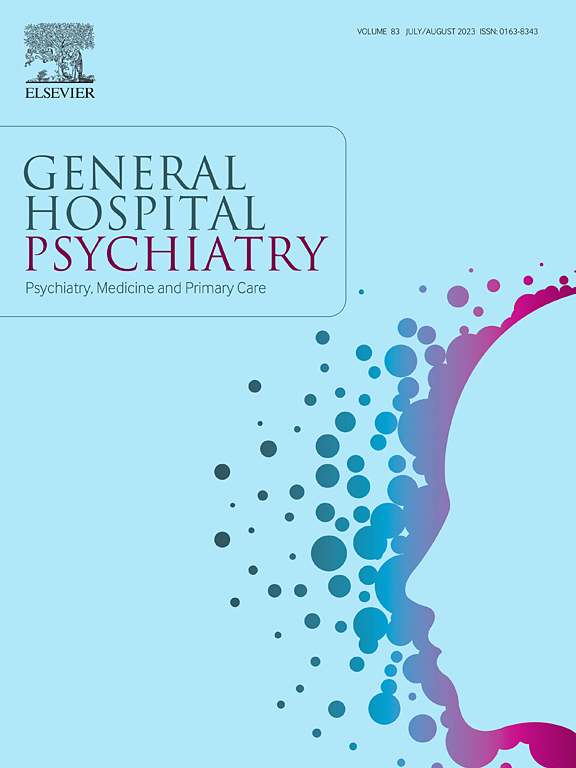患有或未患有镰状细胞病的阿片类药物依赖/使用障碍患者与阿片类药物相关的急诊入院情况:多州保险索赔分析。
IF 4.1
2区 医学
Q1 PSYCHIATRY
引用次数: 0
摘要
目的我们估算了镰状细胞病(SCD)患者中被诊断为阿片类药物相关疾病的阿片类药物相关入院率:我们分析了美国 191,638 名接受阿片类药物相关疾病治疗者的十年(1/2006-12/2016)多州索赔数据。我们使用多变量 cox 回归估计了阿片类药物相关疾病患者在开始治疗后因阿片类药物相关不良事件入院与 SCD 状态(SCD[n = 320] vs 无 SCD[n = 191,318] )之间的关联,同时控制了社会人口学变量和合并症。在二次分析中,我们排除了同时发生的血管闭塞性危机(VOC)事件,并计算了非阿片类药物相关事件(即酒精、大麻)的入院率:SCD队列中有287人(90%)因各种原因入院超过1次,其中199人因VOCs入院,只有78人(20%)发生过阿片类药物相关不良事件。与非 SCD 队列相比,SCD 队列的阿片类药物相关入院率更高(aHR = 1.82[95 % CI = 1.51-2.19),即使在排除与 VOC 同时发生的事件后,这一结果仍然保持稳定。SCD诊断与非阿片类药物相关事件的入院治疗无关:尽管临床医生可能认为 SCD 患者发生药物使用障碍的风险较高,但在被诊断为阿片类相关障碍的 SCD 患者中,与阿片类相关的入院治疗仅占所有原因入院治疗的一小部分,而 VOC 则占入院治疗的大多数。在 SCD 患者中,阿片相关入院人数虽然略高于非 SCD 患者,但相对来说并不常见。本文章由计算机程序翻译,如有差异,请以英文原文为准。
Opioid-related emergency admissions in people with opioid dependence/use disorder with and without sickle cell disease: An analysis of multi-state insurance claims
Objective
We estimated rates of opioid-related admissions in people with sickle cell disease (SCD) diagnosed with opioid-related disorders.
Method
We analyzed ten years (1/2006–12/2016) of multi-state claims data from 191,638 people receiving treatment for opioid-related disorders in the U.S. We used multivariable cox regression to estimate the association between admissions for opioid-related adverse events after initiating treatment and SCD status (SCD[n = 320] vs no SCD[n = 191,318]) among people with opioid-related disorders, controlling for sociodemographic variables and comorbidities. In secondary analyses, we excluded events occurring simultaneously as vaso-occlusive crises (VOCs) and computed rates of admissions for non-opioid substance-related events (i.e., alcohol, cannabis).
Results
Whereas 287(90 %) of the SCD cohort had >1 all-cause admission, of which 199 were for VOCs, only 78(20 %) experienced an opioid-related adverse event. The SCD cohort experienced higher rates of opioid-related admissions than the non-SCD cohort (aHR = 1.82[95 % CI = 1.51–2.19), a finding that remained robust even after excluding events that occurred at the same time as a VOC. SCD diagnoses were not associated with admissions for non-opioid substance-related events.
Conclusions
Even though clinicians may perceive people with SCD as being at elevated risk for substance use disorders, opioid-related admissions made up only a small fraction of all-cause admissions among people with SCD diagnosed with opioid-related disorders, in contrast to VOCs that comprised the majority of admissions. Opioid-related admissions, while modestly higher among those with SCD than among peers without SCD, were relatively uncommon.
求助全文
通过发布文献求助,成功后即可免费获取论文全文。
去求助
来源期刊

General hospital psychiatry
医学-精神病学
CiteScore
9.60
自引率
2.90%
发文量
125
审稿时长
20 days
期刊介绍:
General Hospital Psychiatry explores the many linkages among psychiatry, medicine, and primary care. In emphasizing a biopsychosocial approach to illness and health, the journal provides a forum for professionals with clinical, academic, and research interests in psychiatry''s role in the mainstream of medicine.
 求助内容:
求助内容: 应助结果提醒方式:
应助结果提醒方式:


